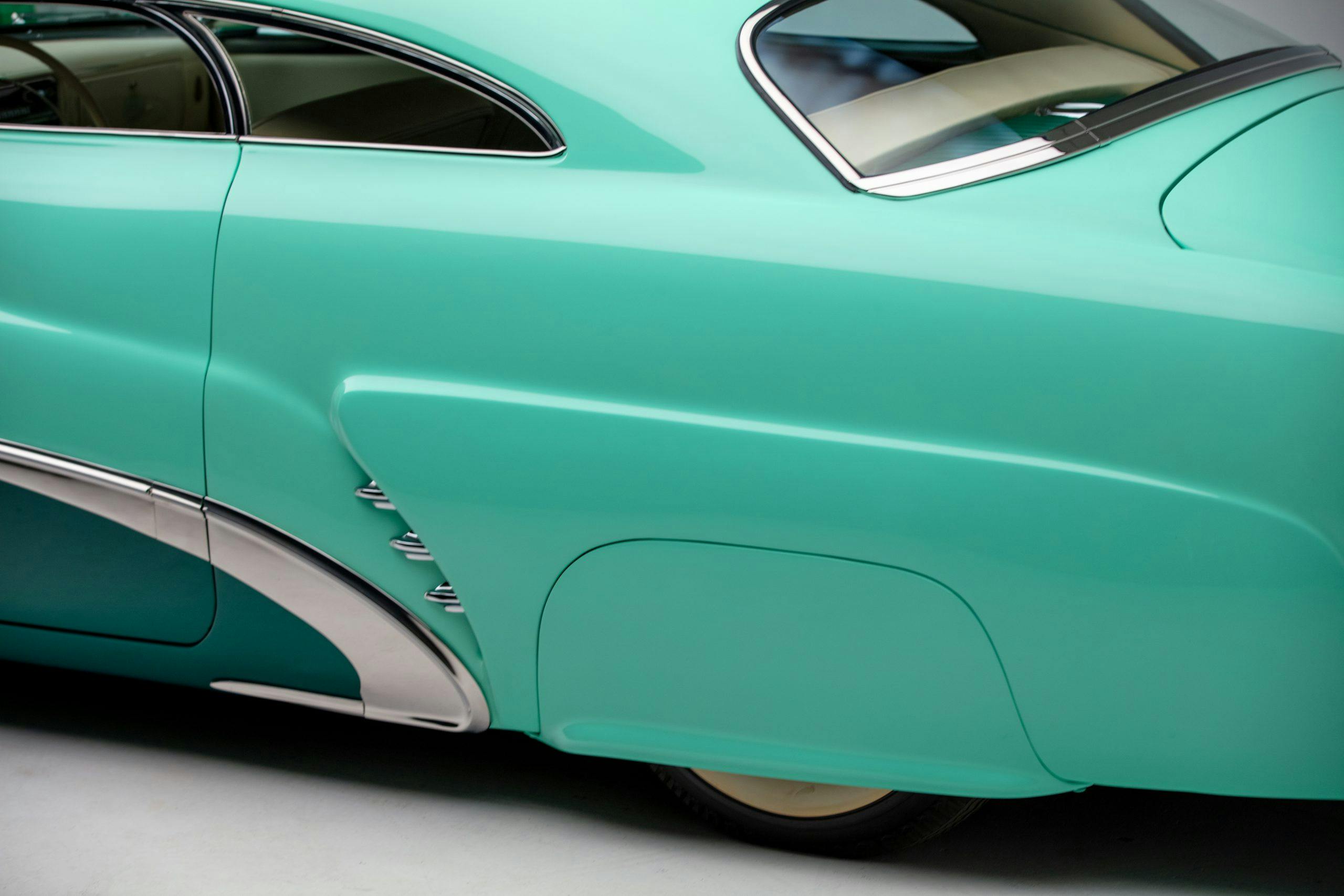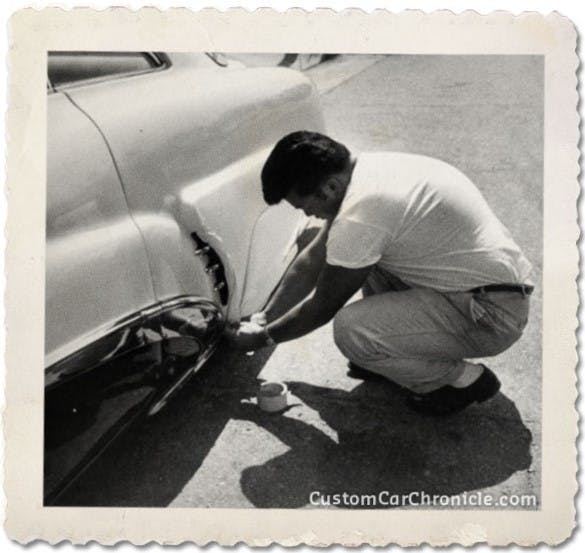Media | Articles
How Barris Kustoms built the Hirohata Mercury in only 14 days
Masato (Bob) Hirohata wanted a car of distinction, one that people immediately recognized as his. Brothers George and Sam Barris made it happen. Nearly 70 years later, it’s still known as the Hirohata Mercury.
“Emotionally, it does something to most people, because the look of that car made you feel happy; it made you feel good,” says Herschel “Junior” Conway, who was just a teenager when he began working at Barris Kustoms. “It enlightened your mind and your vision.”
It’s also one of the most recognizable custom cars ever built. And, amazingly, it all came together in a matter of weeks.
As we learn in Part 2 of The Hirohata Merc: Custom Legend, a four-part docuseries from the Historic Vehicle Association, the soft-spoken Hirohata owned a couple of parking lots in Los Angeles, which provided him with a steady income and some to play with. In 1952, fresh out of the Navy, Hirohata approached Barris Kustoms about building a car.

“He was the best kind of customer,” Conway says. “He could afford it, and he gave them the space to do it.”
Marketplace
Buy and sell classics with confidence
Well, mostly. When George Barris kept putting other projects in front of Hirohata’s, he turned up the heat and announced that he wanted the Merc completed in time for the ’52 Motorama. Nothing like deadline pressure to get the creative juices flowing.
“They built that car, basically, in about two weeks,” says automotive historian and author Pat Ganahl.
Assisted by Frank Sonzogni, the shop modified and customized nearly every square inch of Hirohata’s 1951 Mercury Coupe. And they did it quickly, which required a lot of late nights and as many as 10 people working on it at once.
“It took two upholsterers to get it done in time to get in the show,” Ganahl says. “[And] if you look at it closely, and you look at the scoop on the left side and the scoop on the right side, they’re not the same—because one guy was making this one, and one guy was making this one. But, as Von Dutch said, ‘You can’t see both sides at the same time, so it doesn’t matter.’”
The car was a wonder to behold.

“When they built the Hirohata Mercury,” Conway says, “they did things other people weren’t doing.”
For instance, Ganahl explains, “The Hirohata Merc was the first ’49–51 Merc that they made into a hardtop. But they took it way further than that.”
Among the many modifications, Barris removed the door handles (a hidden button opened the door), built a custom grille from three 1951 Ford grilles, and added frenched headlamps, ’52 Lincoln taillights, and side trim from a 1952 Buick. The corners of the doors and trunk were rounded, the rear was chopped more than the front to give it a lower stance, the car was given a custom rolled-and-pleated upholstery job, and the dash and glovebox were pinstriped by the legendary Von Dutch.
“[George Barris] was taking parts off of new cars,” Ganahl says. “He didn’t go to the junkyards because [those parts] weren’t in the junkyards yet. He had to go to the dealer and buy the parts.”
Greg Sharp, curator and historian at the Wally Parks NHRA Motorsports Museum, says the finishing touch—a bright pastel green paint job—was like nothing anyone had ever seen. “Most customs were dark. He came up with what he called Ice Green …,” Sharp says of Barris. “The two-tone—putting the dark green below—made the car visually lower, and it really had an impact.
“The Barris crest was kind of a badge of honor. It stood for something.”
The custom car community went gaga. Before long, the Hirohata Merc was gracing the covers of automotive magazines from Hot Rod to Motor Trend, and Hirohata was winning awards across the country. After installing a new 1953 Cadillac overhead-valve V-8 engine, he drove the Mercury from Southern California to Indianapolis, a trip that was chronicled in Rod & Custom.
The car even appeared in a movie, 1955’s Running Wild. Hirohata, who used the car as his daily driver, decided to sell it not long after the movie was released.
Among the Merc’s owners was Robert Waldsmith, who also used it as his daily transportation and was hit by another car, an accident that required repairs and new paint—two-tome gold. The car was eventually sold to Doug Kinney, an employee of Ed “Big Daddy” Roth, who repainted it lime green.
Believe it or not, perhaps the most famous custom car in history actually ended up sitting in a used car lot. “Dirty Doug traded it in to buy a ’59 Cadillac,” Sharp says. “The muscle car era came about, and people just forgot about custom cars.”

Conway actually saw the Merc for sale. “I drove on by and thought, ‘Well, that’s the end of that era.’” Except that it wasn’t.
It was in that very lot that a 16-year-old high schooler named Jim McNiel spotted the car while driving to work with his brother…
The four-part Hirohata Mercury documentary is part of the HVA’s Drive History video initiative, which features vehicles in the National Historic Vehicle Register and also showcases veteran preservationists, historians, and automotive experts. Videos are scheduled to be released every Wednesday.
We’ll be sure to keep you posted about each new episode; you can also stay in the loop by following the HVA on Facebook, Instagram, and YouTube.





























I think you underplayed Sam’s role. He was the real genius behind Barris Customs. George was the frontman.